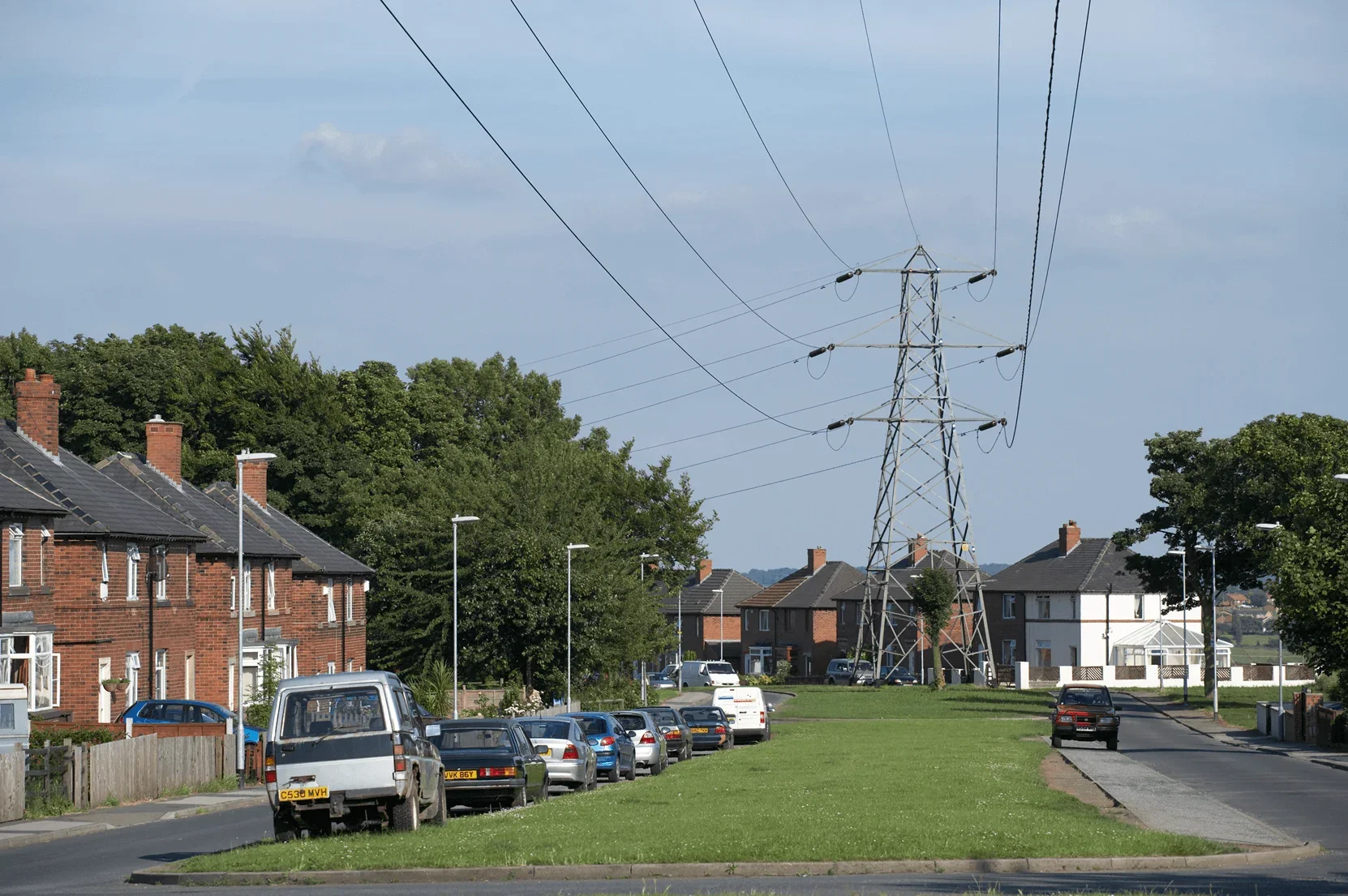BUSINESS ENERGY
A complete guide to business energy bills
Read time: 5 minutes
By Les Roberts, Business Energy Expert
11th February, 2025
All businesses need energy, whether the local restaurant that’s cooking on gas, the corner shop that’s always open, or the office that needs electricity to keep the lights on.
No matter what size business you run, it’s important you understand what’s on your business energy bill.
Energy bills contain loads of useful information, like the type of tariff you’re currently on, how much you’re paying for your business energy, and more.

But, with so much detail crammed in, business energy bills can be confusing to read. Here’s how to decipher the details so you can understand your bill and make sure you’re on the right type of tariff and not overpaying for energy.
What is on your business energy bill?
It can be difficult to pick out which parts of your bill are relevant to you. The way your bill is structured will vary from one supplier to another, but the information it contains will be the same. Below are the key things to look out for. We’ve split it into categories to make it easier to understand:
General information
The account information on your energy bill includes:
- Bill date: When you receive your bill
- Bill number: A reference number for your supplier to identify your bill
- VAT number: Your registered VAT number
- Account number: Your unique account identifier
- Contract details: A summary of the details of the contract you have with your supplier
- Billing period: The time period over which you’re being charged for energy
- Type of charge: Whether your bill is based on an accurate or estimated usage figure
- MPAN/MPRN: A number used by suppliers to identify the energy meters on your property
Charges
These are the charges on your bill, which include:
- Billing period charges: The amount you’re being charged overall during the billing period
- Outstanding charges: The amount you owe, if any, from previous bills
- VAT charges: The amount added to your bill for value-added tax (VAT)
- Total amount due: The amount you owe after adding up all the above
- Cost breakdown: A breakdown of charges that allows you to see exactly where your money’s going
How are business energy bills calculated?
Business energy bills consist of more than just the amount of energy you use per month. Your monthly bill will also include the standing charge, VAT, and other charges.
What costs make up your business energy bill?
Your business energy bill is made up of a number of smaller costs. The two main ones are:
- Daily standing charge: The standing charge covers the cost your supplier has to pay in order to physically transport gas and electricity to your premises, as well as the maintenance of the national grid
- Charge per unit of energy (kWh): Also known as a unit rate, this is the amount you pay for each unit of energy your business uses
These are the two costs to look out for when comparing quotes for business energy.
These two charges are then made up of several different types of charges, including:
- Wholesale energy costs: The costs your energy company pays to buy your gas and electricity from wholesale suppliers. They buy the energy they expect you to use in advance, to make sure they don’t run out during your contract
- Transmission Use of System (TNUoS) charge: This covers the cost of transporting and distributing your energy, while some of it goes towards maintaining the National Grid
- Distribution Use of System (DUoS) charge: Costs applied by companies that are licensed to distribute electricity in the UK, known as the Distribution Network Operators (DNO)
- Climate Change Levy (CCL): The Climate Change Levy is a tax designed to encourage businesses to improve their energy efficiency and reduce their carbon emissions. Some companies are exempt from paying this, depending on how much renewable energy they use
- Metering costs: The cost of buying and maintaining your gas and electricity meters
- VAT: This is usually charged at 20% on business gas and electricity bills, but if you use less than 33 kWh of electricity or less than 145 kWh of gas per day, you may be charged a lower rate of 5%
- Supplier margins: The amount your supplier makes from your custom, which includes marketing, acquisition and admin costs as well as profit
What affects the cost of business gas bills?
The energy industry is victim to many worldwide factors which affect the cost of gas. This means the average business gas bill can fluctuate massively within a short period of time.
For business owners, this makes understanding your gas bill and the prices you can expect a little difficult. Contrary to popular belief, prices don’t just increase because energy providers fancy a little extra cash.
Instead, there’s several factors that play a role, such as:
- Storage
- The availability of gas
- Prices of crude oil
- Regulatory pressures
The amount of gas stored in underground fields plays a key role in determining the average business gas bill. If gas is plentiful in these storage fields, prices will stay relatively stable, regardless of world events.
However, when demand is high and storage low, you’ll likely see an increase in your average gas bill. You’ll also see an increase in price when these storage centres encounter issues with safety and delivery.
Gas flow and availability also play a role. If the gas supply doesn't meet demand, prices inevitably increase. This can often be due to natural events such as weather but can also be linked to problems within the supply lines too.
Crude oil prices make up a large part of the cost for business gas. The prices can be affected by a range of factors, from the stock market to global politics. Any problems or potential risks to the production of crude oil will increase the wholesale cost of oil. In turn, you’ll see price increases for your gas bill payment.
Regulatory pressures have recently become one of the largest influences on the price of gas. With nearly all countries now looking to reduce their carbon emissions, governments have put charges into place for those who rely heavily on emission-heavy gas production.
They’ve also put plenty of incentives in place too, to encourage the move to more green energy. But if you’re not using renewable or low-carbon energy suppliers, you will likely keep seeing the price you pay for an average gas bill increase.
What affects the cost of business electricity bills?
The average bill will often fluctuate. For business owners, this can make life difficult – especially if your business is a start-up or doesn’t have much wriggle-room when it comes to cash flow.
While it is certainly frustrating that the energy market is so volatile, this is not always down to energy corporations just looking to make a quick buck. Instead, there’s a whole variety of factors that influence commercial electricity bills.
Electricity Generation
Electricity generation costs change every single day, even by the hour. The cost of electricity is mostly based on demand. So, for example, between 9am and 5pm, businesses all around the country need electricity to function, putting the national grid under severe strain and costing energy providers more to meet that demand.
On the other hand, there’s much less need for electricity at night, which lowers the cost of supply. The price for energy also changes each season, with much less energy required in summer due to longer days and warmer temperatures.
The Electricity Market Reform Policy
To counteract these fluctuations and to reduce the need for high-emission electricity, the government introduced the Electricity Market Reform Policy. This policy included a Contracts for Difference reform and new rules for the Capacity Market.
Put simply, the Contracts for Difference reform pays low-carbon electricity generators the difference between their costs and the average price for electricity. This means those providing electricity are protected from volatile wholesale energy costs while also protecting customers from paying higher costs when demand is high.
The Capacity Market was introduced to increase investment in low-carbon electricity. On the most basic level, it provides extra finance to those energy companies that generate electricity without the need for high-emission production processes.
World events
World events also play a role in energy price fluctuations. Natural disasters and conflicts can halt access to oil and other fuels. This causes a huge increase in demand and means energy providers have to pay more for the wholesale cost of energy.
How to pay your business energy bill
You can choose how to pay your business energy bill, and the method you go for can affect the amount you have to pay. Choosing the right payment method can be about keeping costs down as well as convenience, so if you think a different method would work better for you, it’s worth speaking to your supplier. These are the most common payment methods:
- Direct debit: Some suppliers will offer a discount for paying by direct debit. If you pay by fixed direct debit, remember to keep an eye on the amount of energy you’re using, as it may not cover the extra energy you use during the colder winter months. It’s a good idea to review your direct debit at least once a year to make sure it’s enough to cover your energy usage - otherwise, you could end up with your account being in credit or in debt.
- BACS: This payment method gives you the flexibility to change the amount you pay each month, based on how much energy you’ve used. It means you’ll have to make a point of paying each time your bill comes through, rather than letting it get paid automatically, but it gives you more control over your outgoings.
- Debit or credit card: If you want to pay by debit or credit card, you’ll need to contact your supplier’s payment department directly. As with BACS, you’ll have to contact your supplier each time you want to make a payment.
- Cheques or Giro: There will usually be a Giro slip at the bottom of your business energy bill. If you want to pay this way, you’ll have to send the slip by post to the address on your bill - remember to allow 3-5 days for postage to ensure you don’t incur any late payment charges.
Do businesses pay more for electricity?
Businesses sometimes pay a lower price per energy unit compared with domestic customers. However, there are a few other things to take into consideration.
For example, businesses have to pay more VAT on their tariffs. This is usually 20%, compared with 5% for domestic energy tariffs. If your business is VAT registered, you can claim this back. Find out more in our guide to VAT and business energy.
Businesses are also subject to the Climate Change Levy (CCL), an extra charge added to every kWh of electricity or gas.
As a result, these additional charges that businesses face can push up the cost of business energy. So, if you’re comparing it to domestic energy tariffs, bear in mind that the unit price won’t tell you the full story.
There are some exceptions on both VAT and CCL, though. For example, a business doesn’t have to pay CCL and only pays 5% VAT if it uses less than an average of 33 kWh or electricity and 145 kWh of gas per day (which is much higher than the average domestic usage).
How to cut your business energy bills
The current energy market volatility means that the usual energy saving measures might not make too much of a dent in your bills. The only way to protect against future price hikes is to fix your rates.
But we should all be mindful of ways we can use less energy, regardless of how much money it will save. So here are some tips to help your business be more energy efficient.
The more energy your business uses, the more expensive your next bill will be. So your first step in cutting your average business energy costs should be to cut the energy your business uses.
You can start with simple measures like putting up posters to prompt your staff to switch off lights or take bigger steps such as upgrading to more energy-efficient equipment. You could even consider making changes to your premises, to improve the insulation or maximise the amount of natural light. But this can be expensive and is usually only an option if you own the premises.
If you're unsure, our energy-saving tips can help you find a solution that's right for you. Remember that any upfront costs you incur can often be recouped over time with the savings that you make.
If cost is your main reason for wanting to reduce your business’s energy consumption, then we recommend running a business energy comparison. This can help you get a better price per unit in order to reduce the amount that you’re paying even further.
To start your business energy comparison, call our business energy experts on 0800 140 4667 today.
Is it time to compare business energy quotes and switch?
Take the hassle out of sorting your next energy deal. We compare from a panel of suppliers. You choose the rates that are right for your business.
By clicking ‘COMPARE TODAYS RATES’ you agree for us to search your current energy supplier and usage though industry held data. Enter manually
Our experts share essential knowledge on business energy
All related guides
View all energy guides
- A complete guide to business energy for offices
- A complete guide to business energy for restaurants
- A complete guide to business energy for shops
- How to get a business energy audit to save money and boost efficiency
- A complete guide to business energy bills
- Business energy brokers – everything you need to know
- What are no standing charge business energy tariffs?
- Business energy efficiency: how to save energy at your business
- Change of Tenancy - Moving your business premises
- Commercial property landlord energy advice
- Energy performance certificate for business
- A complete guide to half hourly electricity meters
- How to pay your business energy bills to save money and avoid late fees
- How your business credit score affects your energy deals
- Compare large and industrial business energy prices
- What are renewable energy certificates and REGOs for small businesses?
- Renewable Energy for Business
- A guide to smart meters for business
- Commercial solar panel electricity
- A business guide to time-of-use energy tariffs
- Business energy tariffs explained
- Everything you need to know about the Smart Export Guarantee (SEG)
- Compare small business & micro business energy prices
- Compare business gas and electricity suppliers
- What is the Climate Change Levy?
- Business energy meter installation: Your complete guide
- Multi-site meters and business energy management
- How much is VAT on business energy?
- What happens when your energy supplier goes bust?
- What is a letter of authority (LoA) for business energy?
- What is business microgeneration?
How to switch business energy suppliers with MoneySuperMarket
We can switch your business to a better energy deal in three simple steps
1
We find your details
Just enter your business address and we'll use industry data to accurately find and understand your energy usage.
2
We talk through your quotes
One of our UK-based energy experts will search our supplier panel and give you a call to talk through your quotes.
3
You choose the deal you want
With all the information to hand, you choose the deal that best suits your business and we’ll handle the switch for you.
Compare today’s business energy rates
By clicking ‘COMPARE TODAY'S RATES’ you agree for us to search your current energy supplier and usage though industry held data. Enter manually






